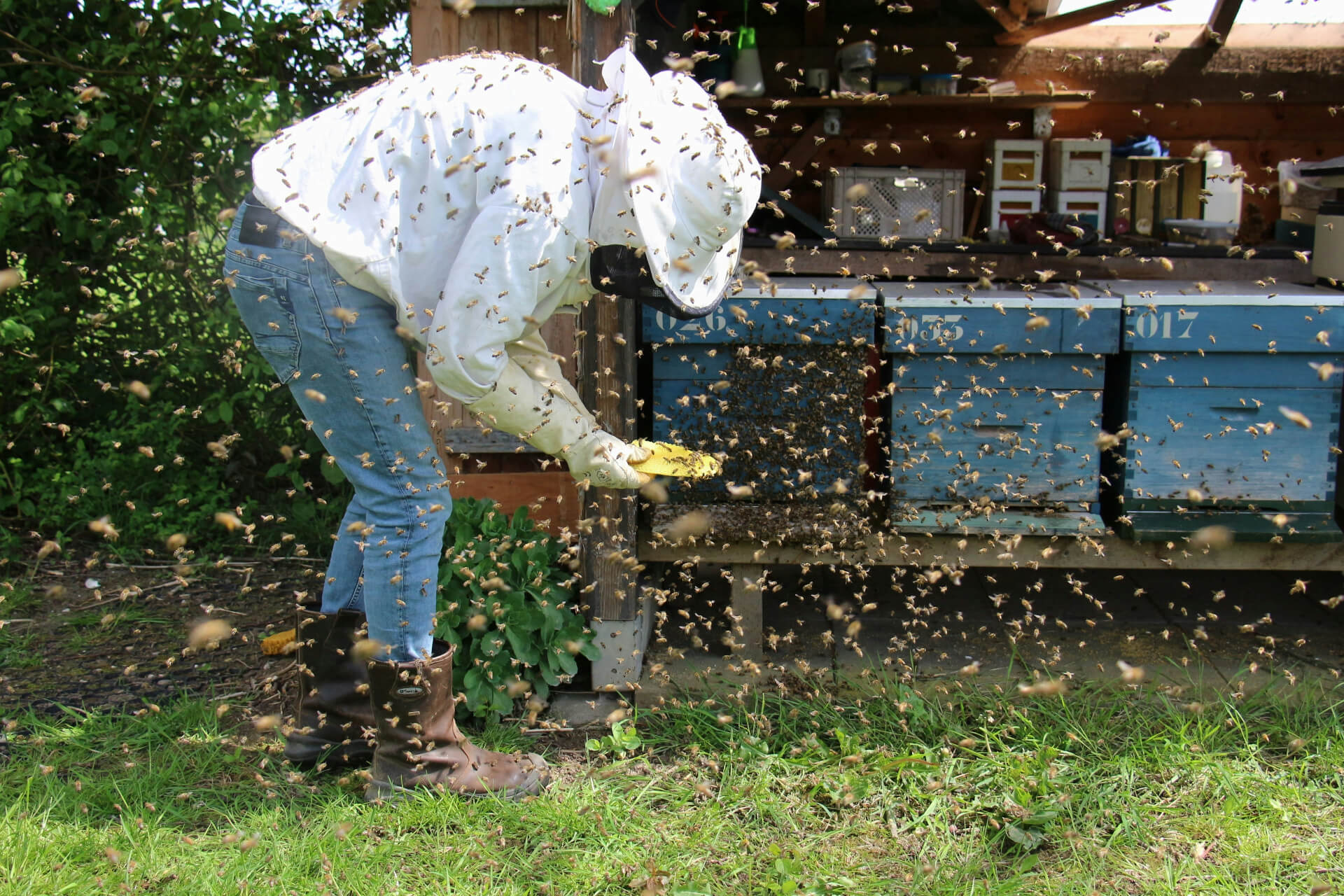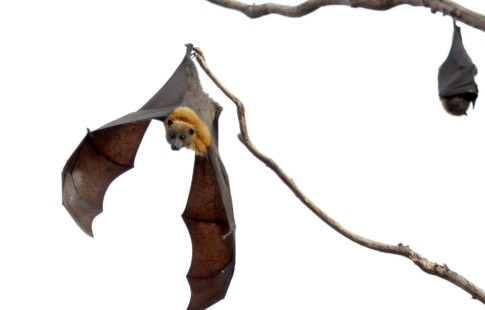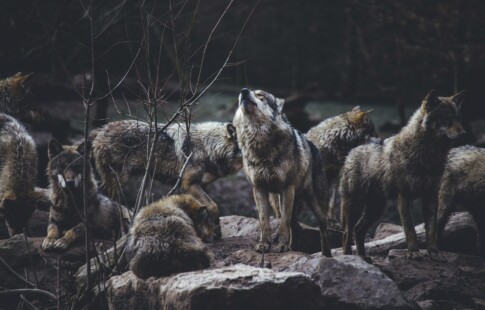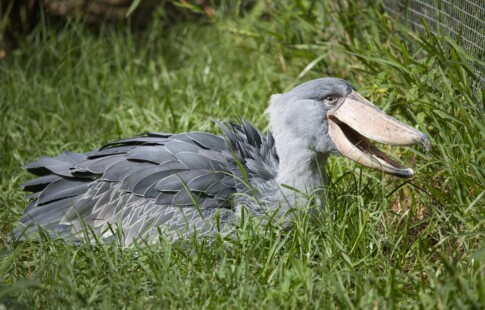
Start a Beehive: The Only Guide You Need for Tools, Tips, and Tricks
We are reader-supported. When you buy through links on our site, we may earn affiliate commission.
Homesteading is becoming more mainstream, and people want ethical sources of food. At-home apiaries and local bee operations will be the norm instead of an artisan exclusive. To assist dwindling bee populations, more people are taking up the mantle and owning the title “beekeeper.” But, how do you even start a beehive and what beehive tools do you need? Is it safe to DIY? Learn the ins and outs and what seasonal recommendations you need for maintenance in this guide.
Beehive Tools You Need to Get Started
Let’s start with the basics — equipment. You can’t have a flourishing colony without the right housing and safety gear. Once you’re prepared, you can learn the minutiae and become an expert beekeeper.
1. Beehive
Your bees need a nice place to stay and create honey. Beehives come in all shapes and sizes. If you don’t want to buy one, you can build your own. Typically, they come in two formats — top bar or Langstroth beehives. The latter is more common and desired than the former, which has no frames. However, a top bar might be better for a backyard. Here is a suggested hive ready for a beginner.
2. Beekeeper Suit
Some brave souls take care of their bees without protective gear, but that requires intense trust and familiarity with the colony. Don’t assume they will respect you until you treat them well. This means starting with a beekeeper suit to prevent stings. A good suit includes these elements:
- Veil
- Gloves
- Boots
- Full-body coverage

3. Smoker
There is contention on whether or not you should use smoke on your bees. Traditionally, smokers are used to calm aggravated bees. Excessive smoker use could lead to unhealthy, distressed bees or damage honey production. When used sparingly and correctly, most experts say smokers are safe, but don’t become too reliant on it to control the population’s temperament.

4. Hive Tool
Hives tools are useful for separating frames for easy inspection. You can also use them for wax scraping and opening hive boxes. These are a multipurpose must, so having a few on hand could prove useful.

5. Bee Brush
Sometimes, the bees are in the way of your inspections or honey-harvesting operations. You can gently encourage bees to move with the right brush. The right motion and brush material will not agitate them and let you get to your work.

6. Feeder
Did you think about how you were going to feed your bees? Feeders, like hives, come in many forms. Some are open bowls while others are framed. Most beekeepers put a sugar syrup in the container.

Step-by-Step Guide on How to Start a Beehive
Once you have all your gear, you might be ready to start diving into the nitty gritty of operating a beehive. What does that look like?
Step 1: Research and Learn
It’s easy to see the list above and quickly purchase all the tools. This doesn’t make you a beekeeper. Before you buy anything, you should educate yourself on bee behaviors, regulations, care, biology, and maintenance. Look for local classes at apiaries or free community programs. Diving deep into online resources and courses works as well.
It is dangerous to start beekeeping without a solid foundation. Taking care of bees will be a lifelong journey, but you need a basis to make it safe for you, your neighbors, and your hive.
Step 2: Choose the Right Location
What is the best place to put the hive? You need a place that’s large enough to let the bees move and make honey. Ideally, it should get decent sun exposure too. The bees should also have consistent water access. Keep equipment and bees away from property lines, or you might have to deal with some upset — and stung — neighbors.
Step 3: Acquire Equipment
Get all the tools you need! Everything above is enough to get you started, but you may also want to pick up some books and medicine in case you get stung. When you get all your supplies, put them together so the bees have somewhere to live when you bring them to their new home.
Step 4: Obtain Bees
Local bee suppliers and expert associations are the best places to source the best bees for your area. Not all bee varieties are created equal or safe to keep, so seek wisdom from tenured professionals before exchanging money.
Step 5: Install
Every species might be different, so follow the advice of the sales source when introducing the bees to their new space. Most of the time, you’ll shake the bees into the hive or transfer the nucleus into frames. Be sure you installed accessible food and water.
Step 6: Monitor and Maintain
You don’t need to be in the hive every minute of every day — in fact, they are lower-maintenance than most people think. However, you’ll want to monitor and maintain them more in the beginning to become acclimated to their behaviors and to build a trusting relationship.
This is a wonderful time to incorporate technology if you have access. Cameras, monitors, and sensors can let you remotely observe your colony, while receiving instant notifications on when to top off their food and water.
Care Tips for Every Season
Discover how beekeeping changes throughout the year if you live in an area that experiences distinct seasonal changes.
Spring
You might be more involved with your hive in the spring because it is the best time to regularly inspect it. Check for pests that might be flourishing as it gets warmer outside. This is also the time the queen should be laying her eggs, so get excited for what’s to come. If bees become too excitable and start to swarm, give them more space to fly around.
Summer
Invasive species, diseases, and other pests will continue to be a concern in summer. Keep your eyes peeled for behavioral changes. You can also start harvesting honey, but make sure you don’t fully deplete their stores.
Fall
Autumn is all about preparing for winter. The temperatures are starting to drop, so your bees might act differently if they aren’t expecting it. Keep water and food topped off so they stay happy and resilient.
Winter
In the chilliest months, you want to disturb the bees even less. They bundle up to stay warm, and spooking them could cause them to release built up heat. You may also want to insulate hives if you notice them becoming too cold. Windbreaks and ventilation are critical.
Start a Beehive: Tools and Tips for All Seasons
Are you ready to become a beekeeper? It is more important than ever for people to eliminate their fear of bees and support their development. The more people normalize it, the better off the planet will be because of increased pollination. They are one of the most critical aspects of environmental wellness, and you could be a part of it!
Share on
Like what you read? Join other Environment.co readers!
Get the latest updates on our planet by subscribing to the Environment.co newsletter!
About the author

Jane Marsh
Starting from an early age, Jane Marsh loved all animals and became a budding environmentalist. Now, Jane works as the Editor-in-Chief of Environment.co where she covers topics related to climate policy, renewable energy, the food industry, and more.





